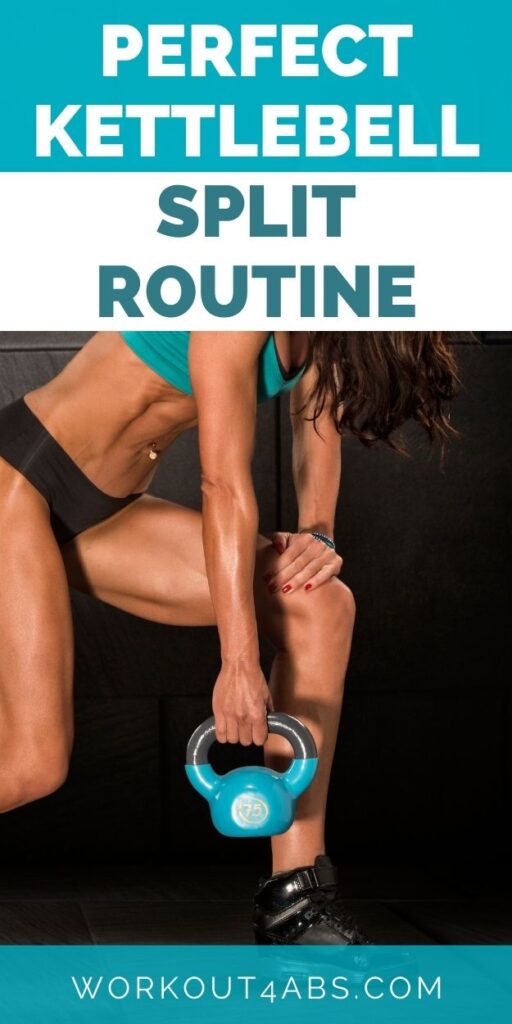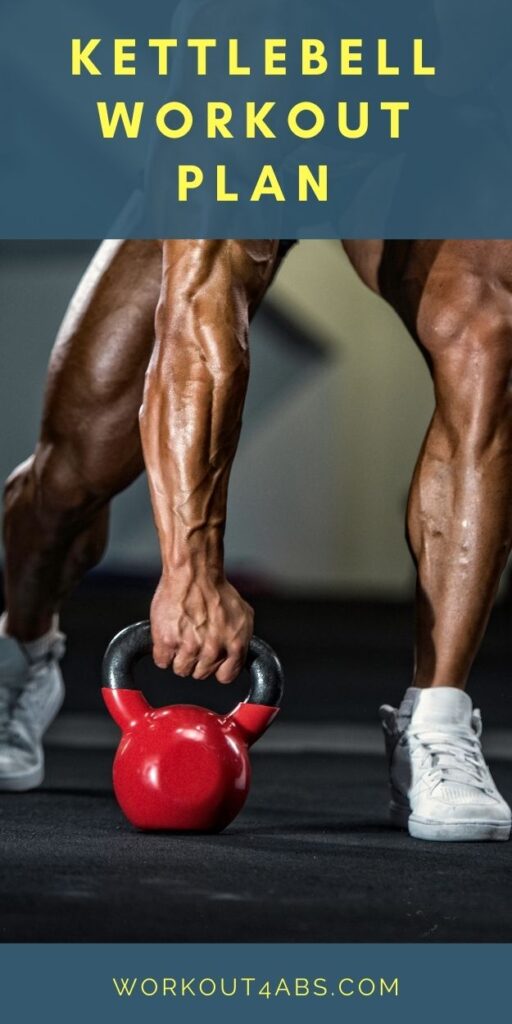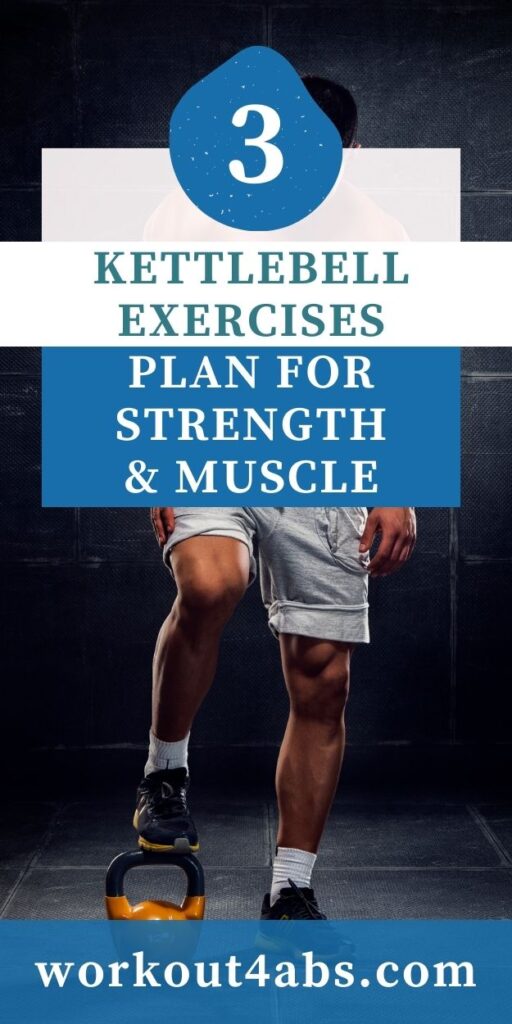You’re about to discover a kettlebell workout plan that maximizes muscle growth and strength gains. In this article, we delve into the art of crafting the perfect kettlebell routine, combining science-backed principles to sculpt your physique and enhance your functional strength. Elevate your training and redefine your results.
How to Design the PERFECT Kettlebell Workout Plan for Building Muscles & Strength
If you enjoyed these tips, please save this pin to your Pinterest Board.

Organizing and Structuring a Strength and Conditioning Kettlebell Workout Plan
Organizing and structuring a kettlebell workout plan for building strength and conditioning requires careful planning to target various muscle groups while maintaining a balance between strength and cardiovascular training. Here’s a structured approach for creating an effective kettlebell workout plan:
1. Goal Setting: Determine your specific goals, whether it’s building strength, improving conditioning, or a combination of both. Having clear objectives will guide your workout plan.
2. Warm-Up: Start with a dynamic warm-up to increase blood flow, raise your heart rate, and prepare your muscles for the upcoming exercises. Include movements like arm circles, leg swings, hip rotations, and light aerobic activity.
3. Strength and Conditioning Segments: Divide your workout into two main segments: strength training and conditioning. Alternate between these segments to create a balanced workout.
Strength Training:
- Choose 3-4 kettlebell exercises that target major muscle groups.
- Perform 3-5 sets of each exercise with 6-12 repetitions per set.
- Focus on using challenging weights while maintaining proper form.
- Rest 1-2 minutes between sets.
Sample Strength Exercises:
- Kettlebell Goblet Squats
- Kettlebell Deadlifts
- Kettlebell Presses (Overhead or Floor Presses)
- Kettlebell Rows
Conditioning:
- Incorporate high-intensity interval training (HIIT) or circuit-style workouts for conditioning.
- Select 3-5 kettlebell exercises that engage multiple muscle groups.
- Perform each exercise for 30-60 seconds, followed by 15-30 seconds of rest.
- Complete 3-5 rounds of the circuit.
- Rest 1-2 minutes between rounds.
Sample Conditioning Exercises:
- Kettlebell Swings
- Kettlebell Snatches
- Kettlebell High Pulls
- Kettlebell Burpees (with kettlebell push-ups or rows)
4. Core and Cool Down: Finish your workout with core exercises and a cool-down to promote flexibility and recovery.
Core Exercises:
- Choose 2-3 kettlebell core exercises, such as Russian twists, kettlebell sit-ups, or windmills.
- Perform 2-3 sets of 12-20 repetitions for each exercise.
Cool Down:
- Stretch major muscle groups to improve flexibility and reduce muscle tension.
- Focus on static stretches, holding each stretch for 15-30 seconds.
5. Progression: As you get stronger and more conditioned, gradually increase the weight, intensity, or duration of your exercises. Monitor your progress and make adjustments to your workout plan accordingly.
6. Rest and Recovery: Schedule rest days to allow your muscles to recover and prevent overtraining. Aim for at least 1-2 days of rest per week.
7. Nutrition and Hydration: Fuel your body with balanced nutrition and stay hydrated to support your workout performance and recovery.
8. Consistency and Variation: Stick to your kettlebell workout plan consistently. Incorporate variations in exercises, rep ranges, and workout structure to prevent plateaus and keep your routine engaging.
Remember: Proper technique and form are crucial to avoid injuries. If you’re new to kettlebell training or have any health concerns, consider working with a certified fitness professional to design a personalized plan tailored to your needs.
If you enjoyed these tips, please save this pin to your Pinterest Board.

Movement vs Muscle Based Workout Program
A movement-based workout program and a muscle-based workout program are two different approaches to structuring your fitness routine. Each approach focuses on distinct aspects of training, leading to varying benefits and outcomes. Here’s a breakdown of the differences between these two approaches:
Movement-Based Workout Program:
Focus: Movement-based programs prioritize functional movement patterns that mimic real-life activities. The goal is to improve overall mobility, stability, and coordination while addressing imbalances and enhancing performance in daily tasks and sports.
Exercise Selection: Exercises are chosen based on fundamental movement patterns, such as pushing, pulling, squatting, lunging, rotating, and bending. The program focuses on integrating multiple muscle groups and joints in a coordinated manner.
Benefits:
- Enhances overall functional fitness, making everyday activities easier and more efficient.
- Reduces the risk of injury by addressing movement imbalances and weaknesses.
- Improves coordination and balance.
- Provides a holistic approach to fitness that complements various physical activities and sports.
Example Exercises:
- Squats
- Push-ups
- Lunges
- Deadlifts
- Planks
- Turkish get-ups
Muscle-Based Workout Program:
Focus: Muscle-based programs concentrate on targeting specific muscle groups to build size, strength, and definition in those areas. The aim is to promote muscle hypertrophy and achieve aesthetic goals.
Exercise Selection: Exercises are chosen to isolate and target individual muscle groups, allowing for greater focus on muscle development and maximizing tension on those muscles.
Benefits:
- Facilitates muscle growth and strength in targeted areas.
- Allows for specialized training to address specific aesthetic goals.
- Can be effective for bodybuilders and individuals seeking muscle definition.
Example Exercises:
- Bicep curls
- Tricep extensions
- Leg press
- Chest press
- Shoulder lateral raises
Choosing the Right Approach: The choice between a movement-based and a muscle-based program depends on your goals, preferences, and current fitness level. Many effective programs combine elements of both approaches to create a well-rounded routine that improves functional movement and muscle development.
For overall health and fitness, a movement-based approach is often recommended, as it focuses on enhancing daily functionality and reducing the risk of injury. Muscle-based programs can be incorporated to target specific muscle groups or achieve aesthetic objectives. Ultimately, the best approach depends on your individual fitness goals and what you enjoy doing.
If you enjoyed these tips to lose fat and gain muscle and would like to keep it close to you at any time, just save this pin to your Pinterest Board.

Home › Aesthetic Body Plan ›Kettlebell Workout Plan